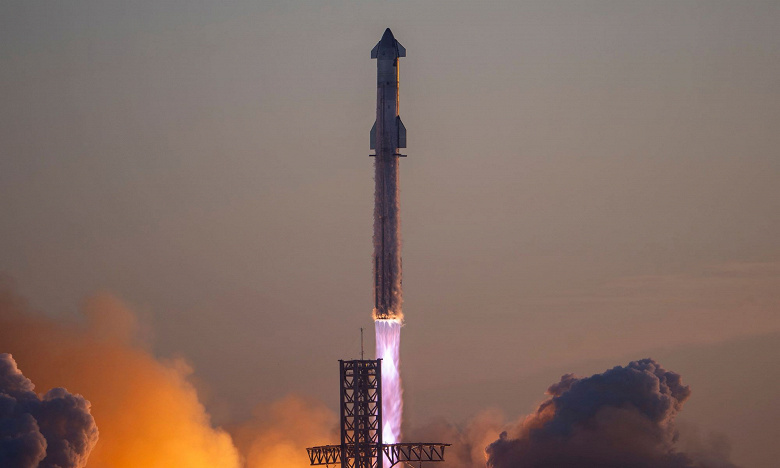The most powerful rocket created by SpaceX for space missions and the colonization of Mars is ready to launch again
Starship Super Heavy — the first fully reusable launch system and the most powerful rocket in history. The project is a key element in SpaceX's strategy to create broadband satellite Internet, send crews and cargo to the Moon and establish the first settlement on Mars. After years of development, design changes and «jump testing» The launch pad, located near Boca Chica, Texas, began orbital testing last April. Both prototypes were lost in the first two launches, but on the second flight the prototype was able to reach orbit.
According to a recent company statement, the third flight test (FT-3) could take place as early as March 14, pending approval from the Federal Aviation Administration (FAA). This event will be broadcast live.
During the first test flights, fully equipped prototypes SN24 and BN7 successfully took off from the pad and reached an altitude of about 40 kilometers above sea level. However, SN24 failed to separate from BN7 several minutes into its flight, and teams activated the onboard explosive system to destroy both vehicles and prevent an uncontrolled emergency landing. Following the investigation, SpaceX upgraded its launch pad and prepared for the next phase of testing.
The second tests took place in November of the following year, during which the prototypes SN25 and BN9 successfully launched and separated at an altitude of 70 kilometers. About 30 seconds after the booster separated, the booster lost and exploded over the Gulf of Mexico, and SN25 reached an altitude of about 148 kilometers, slightly below its target of 150 kilometers. SN25 exploded after entering outer space due to activation of the flight termination system. According to the company, the third flight will build on practical lessons learned from previous attempts.
«The second Starship tests provided several important results and valuable data for development. Each of these tests was just that: a test. They were not carried out in a laboratory or on a test bench — Real flight conditions maximize the learning experience».
This is in line with SpaceX's philosophy of rapid prototyping and iterative development, which takes lessons from previous tests. According to plans presented in the statement, the tests will include «a number of ambitious tasks", including take-off of both stages, «flip» rockets after separation and landing in the Gulf of Mexico. The cargo compartment will be opened approximately 12 minutes after launch (and closed after 16 minutes) to test the ability to release satellites and other cargo into space.
Other goals are to demonstrate fuel transfer and restart the Raptor engine in space. This will be followed by a controlled re-entry and splashdown in the Indian Ocean approximately one hour after launch.

